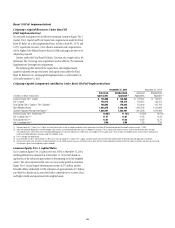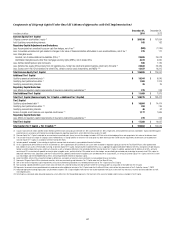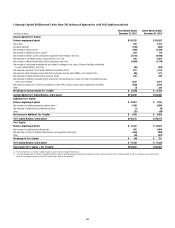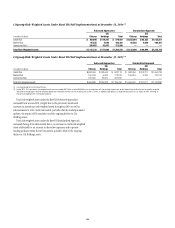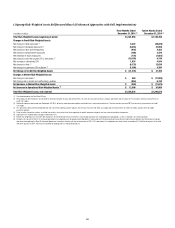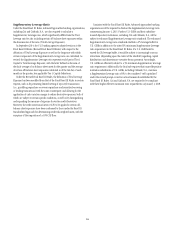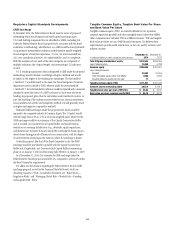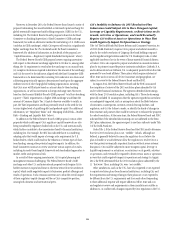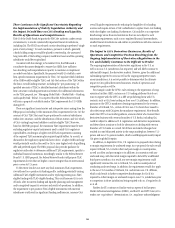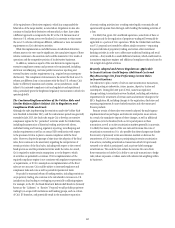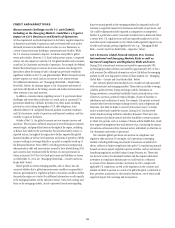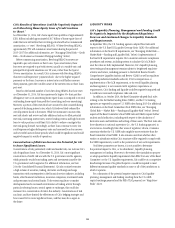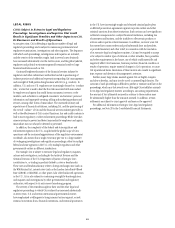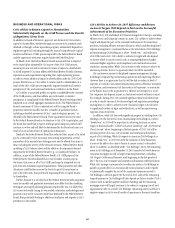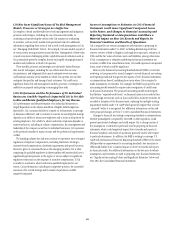Citibank 2014 Annual Report Download - page 73
Download and view the complete annual report
Please find page 73 of the 2014 Citibank annual report below. You can navigate through the pages in the report by either clicking on the pages listed below, or by using the keyword search tool below to find specific information within the annual report.56
There Continues to Be Significant Uncertainty Regarding
the Implementation of Orderly Liquidation Authority and
the Impact It Could Have on Citi’s Funding and Liquidity,
Results of Operations and Competitiveness.
Title II of the Dodd-Frank Act grants the FDIC the authority, under certain
circumstances, to resolve systemically important financial institutions,
including Citi. The FDIC has released a notice describing its preferred “single
point of entry strategy” for such resolution, pursuant to which, generally,
a bank holding company would be placed in receivership, the unsecured
long-term debt of the holding company would bear losses and the operating
subsidiaries would be recapitalized.
Consistent with this strategy, in November 2014, the FSB issued a
consultative document designed to ensure that GSIBs have sufficient
loss-absorbing and recapitalization capacity in resolution to implement
an orderly resolution. Specifically, the proposal would (i) establish a new
firm-specific minimum requirement for TLAC; (ii) stipulate which liabilities
of the GSIB would be eligible TLAC; and (iii) the location of the TLAC within
the firm’s overall funding structure, including the “pre-positioning” of
specified amounts of TLAC to identified material subsidiaries within the
firm’s structure, including international entities (for additional information
on the TLAC proposal, see “Managing Global Risk—Market Risk—Funding
and Liquidity Risk” below). It is expected that the Federal Reserve Board
will issue a proposal to establish similar TLAC requirements for U.S. GSIBs
during 2015.
There are significant uncertainties and interpretive issues arising from the
FSB proposal, including (i) the minimum TLAC requirement for Citi; (ii) the
amount of Citi’s TLAC that must be pre-positioned to material subsidiaries
within Citi’s structure, and the identification of those entities; and (iii) which
of Citi’s existing long-term liabilities constitute eligible TLAC. Moreover,
based on the FSB’s proposal, the minimum TLAC requirement must be met
excluding regulatory capital instruments used to satisfy Citi’s regulatory
capital buffers, resulting in a higher overall TLAC requirement consisting
of the required TLAC minimum plus required capital buffers. As a result, as
discussed in the regulatory capital risk factor above, a higher GSIB surcharge
would potentially result in the need for Citi to issue higher levels of qualifying
debt and preferred equity. The FSB’s proposal also provides guidance for
regulatory authorities to determine additional TLAC requirements, specific to
individual financial institutions. Accordingly, similar to the Federal Reserve
Board’s U.S. GSIB proposal, the Federal Reserve Board could propose TLAC
requirements for Citi that are higher or more stringent than its international
peers or even its U.S. peers.
To the extent Citi does not meet any final minimum TLAC requirement,
it would need to re-position its funding profile, including potentially issuing
additional TLAC-eligible instruments and/or replacing existing non-TLAC
eligible funding with TLAC-eligible funding. This could increase Citi’s costs
of funds, alter its current funding and liquidity planning and management
and/or negatively impact its revenues and results of operations. In addition,
the requirement to pre-position TLAC-eligible instruments with material
subsidiaries could result in significant funding inefficiencies, increase Citi’s
overall liquidity requirements by reducing the fungibility of its funding
sources and require certain of Citi’s subsidiaries to replace lower cost funding
with other higher cost funding. Furthermore, Citi could be at a competitive
disadvantage versus financial institutions that are not subject to such
minimum requirements, such as non-regulated financial intermediaries,
smaller financial institutions and entities in jurisdictions with less onerous or
no such requirements.
The Impact to Citi’s Derivatives Businesses, Results of
Operations and Competitive Position Resulting from the
Ongoing Implementation of Derivatives Regulation in the
U.S. and Globally Continues to Be Difficult to Predict.
The ongoing implementation of derivatives regulations in the U.S. as
well as in non-U.S. jurisdictions has impacted, and will likely continue to
substantially impact, the derivatives markets. However, given the additional
rulemaking expected to occur as well as the ongoing interpretive issues
across jurisdictions, it is not yet possible to determine what the ultimate
impact to Citi’s global derivatives businesses, results of operations and
competitive position will be.
For example, under the CFTC’s rules relating to the registration of swap
execution facilities (SEF), certain non-U.S. trading platforms that do not
want to register with the CFTC as a SEF are prohibiting firms with U.S.
contacts, such as Citi, from trading on their non-U.S. platforms. In addition,
pursuant to the CFTC’s mandatory clearing requirements for the overseas
branches of Citibank, N.A., certain of Citi’s non-U.S. clients have ceased to
clear their swaps with Citi given the mandatory requirement. More broadly,
under the CFTC’s cross-border guidance, overseas clients who transact their
derivatives business with overseas branches of U.S. banks, including Citi,
could be subject to additional U.S. registration and derivatives requirements,
and these clients continue to look for alternatives to dealing with overseas
branches of U.S. banks as a result. All of these and similar changes have
resulted in some bifurcated activity in the swaps marketplace, between U.S.-
person and non-U.S.-person markets, which could disproportionately impact
Citi given its global footprint.
In addition, in September 2014, U.S. regulators re-proposed rules relating
to margin requirements for uncleared swaps. As re-proposed, the rules would
require Citibank, N.A. to both collect and post margin to counterparties,
as well as collect and post margin to its affiliates, in connection with any
uncleared swap, with the initial margin required to be held by unaffiliated
third-party custodians. As a result, any new margin requirements could
significantly increase the cost to Citibank, N.A. and its counterparties of
conducting uncleared swaps. In addition, the requirements would also apply
to the non-U.S. branches of Citibank, N.A. and certain non-U.S. affiliates,
which could result in further competitive disadvantages for Citi if it is
required to collect margin on uncleared swaps in non-U.S. jurisdictions prior
to competitors in those jurisdictions being required to do so, if required to do
so at all.
Further, the EU continues to finalize various aspects of its European
Market Infrastructure Regulation (EMIR), and the EU and CFTC have yet to
render any “equivalency” determinations (i.e., regulatory acknowledgment


